The British diplomat Sir Valentine Chirol (1852-1929) wrote a memoir entitled Fifty Years in a Changing World (New York: Harcourt and Brace, 1928). Among the areas in the Middle East that he visited or commented upon were Egypt, Syria, Ottoman Turkey, Persia and the Persian Gulf. He also has some interesting observations on India, Japan, the Balkans, Berlin and Russia. Of particular interest is his commentary on Egypt in 1876 before the British occupation. Below is an example of that.
Category Archives: India
Marvels and Wonders: Al-Qazwini and Beyond

There is a fascinating talk on Youtube by Travis Zadeh on marvels and wonders in Islamic texts, especially the many versions of al-Qazwini.
Middle East and Asia Project
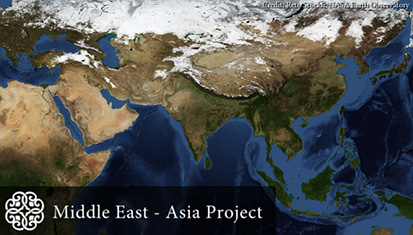
The Middle East-Asia Project (MAP) is an initiative undertaken by the Middle East Institute which is designed to serve two broad objectives:
1. To promote awareness and understanding of the multidimensional relations between the Middle East and Asia by providing information and analysis on cross-regional economic, political, security, and social/cultural interactions and their implications; and
2. To foster collaborative research and other activities regarding Middle East-Asia relations through establishing an online community of experts and forging institutional partnerships.
The Cyber Library contains publication details, abstracts and live links to full text versions of previously published works on Middle East-Asian affairs organized by country and by topic/issue.
The Experts Directory contains the profiles and contact details of a worldwide network of academics, business leaders, diplomats, journalists, researchers and other practitioners affiliated with the MAP.
The Infographics project element consists of periodically updated charts, tables and timelines depicting key trends and developments in trade, investment, migration, and other spheres of cross-regional activity.
The Publications element is organized as follows: Continue reading Middle East and Asia Project
Early Marriage and Early Islam
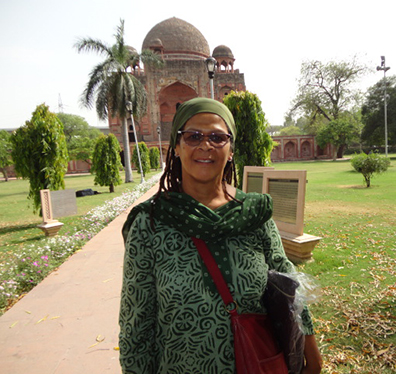
Dr. amina wadud
by amina wadud, feminismandreligion.com, Oct. 3, 2013
This week, in the state where I am living, Kerala, India:
“…nine prominent Muslim (sic) organizations have decided to approach the Supreme Court to exclude Muslim women from the law prescribing a minimum marital age. According to them, the present Prohibition of Child Marriage Act, 2006, which prescribes 18 as women’s legal age and 21 for men, violates Muslims’ fundamental right to practice their religion.â€
Let me try to step back and formulate this in plain English.
India is a secular democratic nation-state, with a population of over 1 billion, a poverty rate at best estimated at 22%. It ranks as the 55th worst country with regard to its maternal mortality rate with estimates as high as 450 per 100,000, and has an infant mortality rate of 44-55 per 1000. All the above factors have a direct corollary to child marriage: poverty, maternal mortality (think babies having babies), and thus, infant mortality is directly related to the national age of marriage.
Thus, one way to eradicate poverty, save mothers, and save infants is to prevent child marriage. It is no wonder preventing child marriage is a leading strategy for development organizations, human rights organizations and even the World Bank. In 2006, India passed the Child Marriage Act which states, “This legislation is armed with enabling provisions to prohibit child marriages, protect and provide relief to victims and enhance punishment for those who abet, promote and solemnize such marriages†(pg 1).
Against the proven results: maternal mortality and infant mortality rates have declined since the inception of the Child Marriage Act, Muslim organizations in Kerala have decided to approach the Supreme Court to ask that Muslims be exempted as it “violates the fundamental right to practice their religionâ€!!!
While providing no evidence that child marriage is “fundamental†to our religion, the absence of which would “violate†our ability to practice—since there is no such evidence—let me at least attempt to objectively describe the process of history and culture as it might lead to such a misconception. Continue reading Early Marriage and Early Islam
Orientalist Images from an Old Album #4
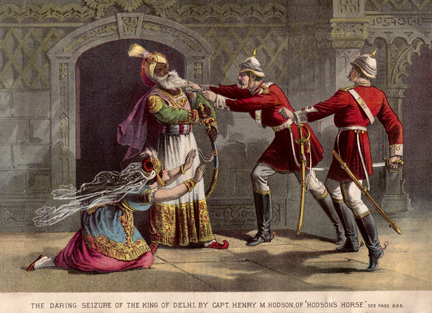
My grandmother’s aunt, Ms. Ida Hoyt, put together several scrapbooks in the 1890s. The pages are quite frayed today, but most of the images are still in good shape. At this time the British Raj was in full force, including the “glorious” depictions of the British rule.

Detail
For Part 1, click here; for Part 2, click here; for Part 3, click here.
British Dominion in India

Robert Clive and Mir Jafar after the Battle of Plassey, 1757, by Francis Hayman
In 1894, as Queen Victoria smiled upon the empire upon which the sun never was allowed to set, the British literary historian Sir Alfred Comyn Lyall wrote a book that was to go through five editions by 1910 and reprints for a decade after. This was The Rise and Expansion of the British Dominion in India, published by Murray in London (I am using the 1919 edition, only recently ejected from my university library collection). This was, of course, before the fall, before India achieved independence from the Raj lords in 1947. As the 19th century came to a close, Lyall could boast that “the existing relations between India and England constitute a political situation unprecedented in the world’s history†(p. 3). Although Edward Said was aware of the biased Orientalist notions of Lyall, this particular book appears to have escaped Said’s justifiable wrath. He thus missed the telling remark that the “Indian people were, from the beginning, so far from objecting to the English dominion in India that they co-operated willingly in promoting it†(p. 3). Perhaps Lyall prefigures Gramsci in this respect; both understand the power of hegemony. Lyall, by the way, was also a poet, who once wrote a diatribe in verse, called Theology in Extremis, against attempts in India to convert British prisoners to Islam.
Lyall, not to be confused with his fellow civil servant and Arabist namesake, Charles James Lyall, was also concerned about the future of British India. He teases the reader with a quote made by Sir James Mackintosh that “England has lost a great dominion in North America in 1783 and had won another in India in 1805,†adding that “it was still uncertain whether the former as any real loss, or the latter any permanent gain†(p. 353). Another historian, Spencer Walpole, opined “Centuries hence, some philosophical historian … will relate the history of the British in India as a romantic episode which has had no appreciable effect upon the progress of the human family†(p. 353). Perhaps the episode was not romantic for people under British rule in India and the appreciable effect took place mainly on Indian bodies on the Indian continent. But Walpole seems quite prescient to me.
The future had to be more British rule, as Lyall saw it. Continue reading British Dominion in India
Tabsir Redux: Mocha Musings #4: Morocco to Afghanistan
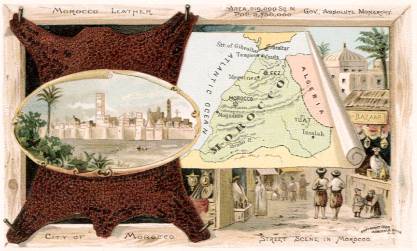
Area: 219,000 sq. mi
Population: 2,750,000
Government: Absolute Monarchy
Scenes: Morocco Leather; City of Morocco; Street Scene in Morocco
previous post I began a series on coffee advertising cards with Middle Eastern themes. One of the most colorful collections is that provided by the Arbuckle Coffee Company. In my great, great aunt’s album there were several Middle Eastern and North African nations represented, but she did not have all the cards. Here is a final potpourri from Arbuckle’s 1889 series, starting with Morocco above. Continue reading Tabsir Redux: Mocha Musings #4: Morocco to Afghanistan
Anger over female circumcision in a Muslim sub-sect in India
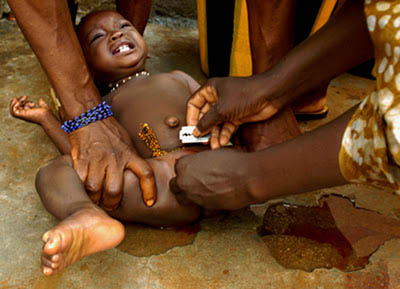
NY Daily News, Tuesday, April 24th 2012
Over 1,600 Bohra Muslim women in India have signed an online petition calling for an end to the practice of female circumcision in the community. The community’s insistence on “Khatna” (the excision of the clitoris) sets it apart from other Muslims in the Indian subcontinent.
Eleven years ago, Farida Bano was circumcised by an aunt on a bunk bed in her family home at the end of her 10th birthday party.
The mutilation occurred not in Africa, where the practice is most prevalent, but in India where a small Muslim sub-sect known as the Dawoodi Bohra continues to believe that the removal of the clitoris is the will of God.
“We claim to be modern and different from other Muslim sects. We are different but not modern,” Bano, a 21-year-old law graduate who is angry about what was done to her, told AFP in New Delhi. She vividly remembers the moment in the party when the aunt pounced with a razor blade and a pack of cotton wool.
The Bohra brand of Islam is followed by 1.2 million people worldwide and is a sect of Shia Islam that originated in Yemen. While the sect bars other Muslims from its mosques, it sees itself as more liberal, treating men and women equally in matters of education and marriage.
The community’s insistence on “Khatna” (the excision of the clitoris) also sets it apart from others on the subcontinent. “If other Muslims are not doing it then why are we following it?” Bano says. Continue reading Anger over female circumcision in a Muslim sub-sect in India




